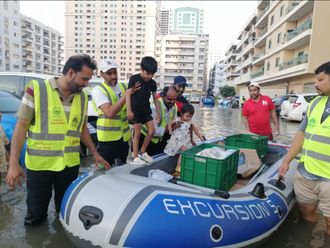
Last year, I marked the milestone of travelling to my 50th country when I landed on the lovely little island of Zanzibar, filled with serendipity and smugness, but bereft of spending power. I had forgotten to tuck a debit and credit card into my travel wallet as is my wont, and the emergency cash hidden in secret compartments amounted to a meagre $220 (Dh800).
Thankfully, my hotel room was paid for and I had a return ticket to Dubai, but I had to fend for food, see the sights, and pay for everything else. From a self-proclaimed expert and veteran traveller, I was reduced to a hapless and witless idiot. However, I not only survived but thrived, and my mission now is to evangelise on the endless debate of whether cash or card is more important for international travel. Both are — and in equal measure.
There are destinations that place an undue importance on plastic and sometimes cash, and there are situations when you will be wise to use one over the other, but do carry both and use them judiciously, just as the experts advise.
Rick Steves, an authority on European travel with more than 50 guidebooks, a syndicated column and popular shows on radio and television, says travel to Europe must involve carrying cash. “In Europe, day-to-day spending can be more cash-based, so when I’m there I rely mostly on cash, though I appreciate the convenience that credit cards offer,” he writes on his eponymous website.
“For me, it all comes down to maximising ease, and minimising fees.” Whenever Steves lands in Europe, he heads for an ATM at the airport, loads up on cash, and keeps it safe in his money belt. “I pay for as much as possible with cash — using a bank that charges zero or low fees for international transactions, and by withdrawing large amounts at each one.
“I never exchange dollars for foreign cash at a currency exchange booth and I don’t bother getting euros, pounds, or whatever prior to my trip.”
Likewise, Joe Bindloss, who has written more than 20 guidebooks for Lonely Planet, offers advice about travelling to Africa and Asia — also with cash in hand. “There are some destinations where cash is the only game in town. Parts of Africa and Asia have yet to plug into the global ATM network, so the only money available is what you bring in.”
Bindloss cautions against complete dependence on a card: “It’s the ultimate travel nightmare: You use an ATM
in a remote part of the world and it eats your card. What do you do?
“All you have left in your pocket [are] a few notes and there’s still the hotel bill to pay. Eek,” he says in his May essay, Lonely Planet’s travel money essentials.
“It is best to have [a] plan B, when it comes to your travel cash,” Bindloss adds. “It’s crucial to take the time to prepare for worst-case scenarios before you leave home — which is much less stressful than trying to troubleshoot in a foreign country. “Credit cards come in handy for making reservations and larger purchases, and are also excellent in emergencies.” Using a credit or debit card has several payoffs, and smart travellers always use a mix of these. Besides, you can fall back on the cards if your cash ever goes missing.
Steves recommends that you carry US dollars for emergencies like bank strikes or ATM failures. “Hard cash is hard cash,” he says. “People always know roughly what a dollar is worth.
“If local banks don’t have exchange services, you can always find exchange desks at major train stations or airports.” Steves carries several hundred US dollars as a backup, in denominations of easy-to-exchange 20s.
Personally, I cannot emphasise enough that besides cards and cash, it is vital to have emergency money tucked into secret compartments in different parts of your wallet, handbag, and suitcase.
Someday, you may find yourself using it to buy pot noodles to stave off hunger.












